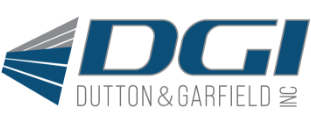
Risk Management in Design-Build Projects: Strategies for Success
Effective risk management is crucial for the success of design-build projects. This project delivery method, which integrates design and construction services, offers numerous benefits but also presents unique challenges. At Dutton & Garfield, Inc., we understand the complexities involved in design-build projects and the importance of proactive risk management to ensure seamless execution and optimal outcomes. In this article, we will explore common risks in design-build projects, strategies for mitigating these risks, the role of contracts in risk management, tools and techniques for effective risk management, and best practices for continuous risk monitoring and management.
Identifying Common Risks in Design-Build Projects
Design-build projects combine the roles of designer and contractor into a single entity, which can streamline processes but also introduce specific risks. Here are some common risks associated with design-build projects:
Design and Scope Changes:
- Frequent changes in design or scope can lead to project delays, increased costs, and resource misallocation.
- Unclear or evolving project requirements can exacerbate these issues.
Budget Overruns:
- Inaccurate cost estimations or unforeseen expenses can cause budget overruns.
- Inadequate contingency planning can exacerbate financial risks.
Schedule Delays:
- Delays in design approvals, material procurement, or construction activities can impact the project timeline.
- Poor coordination among team members can further contribute to schedule slippages.
Quality and Performance Issues:
- Subpar materials or construction practices can compromise the quality and performance of the finished project.
- Insufficient quality control measures can lead to defects and rework.
Regulatory and Compliance Risks:
- Failure to adhere to local building codes, regulations, and safety standards can result in legal and financial penalties.
- Environmental regulations and permit requirements add additional layers of complexity.
Strategies for Mitigating Design and Construction Risks
Proactive risk mitigation strategies are essential to manage the challenges inherent in design-build projects. Here are some effective strategies to consider:
Comprehensive Planning and Scope Definition:
- Clearly define project scope, objectives, and deliverables at the outset to minimize ambiguities and changes during execution.
- Engage all stakeholders in the planning process to ensure alignment and shared understanding of project goals.
Detailed Cost Estimation and Budgeting:
- Conduct thorough cost estimations and include adequate contingencies for unforeseen expenses.
- Regularly review and update the budget to reflect changes in project scope or market conditions.
Robust Scheduling and Coordination:
- Develop a detailed project schedule with realistic timelines and milestones.
- Implement effective coordination mechanisms to ensure seamless communication and collaboration among team members.
Quality Assurance and Control:
- Establish stringent quality control protocols to ensure that materials and workmanship meet the required standards.
- Conduct regular inspections and audits to identify and rectify quality issues promptly.
Regulatory Compliance and Permitting:
- Stay informed about relevant regulations and codes and ensure compliance throughout the project lifecycle.
- Engage with regulatory authorities early to facilitate smooth permitting and approval processes.
Implementing these strategies can help mitigate the risks associated with design and construction in design-build projects, ensuring a smoother and more successful project outcome.
The Role of Contracts and Agreements in Risk Management
Contracts and agreements play a critical role in managing risks in design-build projects. They establish clear terms and conditions that outline the responsibilities, expectations, and protections for all parties involved. Here are some key aspects to consider:
Clear Scope of Work:
- Define the project scope in detail to avoid misunderstandings and disputes later on.
- Include provisions for handling changes in scope, with clear processes for approvals and cost adjustments.
Risk Allocation:
- Allocate risks appropriately between the design-builder and the client. This may include financial, scheduling, and quality-related risks.
- Clearly state who is responsible for each type of risk and the consequences of non-compliance.
Payment Terms and Milestones:
- Establish a payment schedule linked to project milestones to ensure timely compensation and maintain cash flow.
- Include clauses for handling delays or performance issues that may impact payment schedules.
Dispute Resolution Mechanisms:
- Incorporate mechanisms for resolving disputes, such as mediation or arbitration, to avoid costly and time-consuming litigation.
- Define the steps and timelines for addressing and resolving disputes.
Insurance and Bonding:
- Ensure that appropriate insurance and bonding are in place to protect against financial losses and liabilities.
- Include provisions for performance bonds, liability insurance, and other relevant coverages.
Tools and Techniques for Effective Risk Management
Utilizing the right tools and techniques can significantly enhance risk management in design-build projects. Here are some effective methods:
Risk Assessment and Analysis:
- Conduct regular risk assessments to identify potential risks and their impact on the project.
- Use qualitative and quantitative analysis techniques to prioritize risks based on their severity and likelihood.
Risk Register:
- Maintain a risk register that documents all identified risks, their status, and mitigation measures.
- Update the risk register regularly to reflect new risks and the effectiveness of mitigation strategies.
Project Management Software:
- Leverage project management software to track progress, manage resources, and monitor risks in real-time.
- Use tools that offer risk management modules to integrate risk tracking with overall project management.
Communication and Reporting:
- Establish clear communication channels to ensure that all stakeholders are informed about risks and mitigation measures.
- Regularly report on risk status and progress to maintain transparency and accountability.
Contingency Planning:
- Develop contingency plans for high-impact risks to ensure quick and effective responses if they materialize.
- Allocate resources and budget for contingency measures to minimize disruptions.
Best Practices for Continuous Risk Monitoring and Management
Continuous risk monitoring and management are essential to keep a design-build project on track. Here are some best practices:
Regular Risk Reviews:
- Schedule regular risk review meetings to assess the current risk landscape and update mitigation strategies.
- Include key stakeholders in these reviews to ensure comprehensive risk management.
Proactive Issue Resolution:
- Address issues promptly as they arise to prevent them from escalating into major problems.
- Empower project teams to take immediate action on minor issues to maintain project momentum.
Performance Metrics and KPIs:
- Establish performance metrics and key performance indicators (KPIs) to monitor project progress and risk management effectiveness.
- Use these metrics to identify areas for improvement and adjust strategies accordingly.
Continuous Improvement:
- Adopt a continuous improvement mindset to refine risk management processes based on lessons learned and feedback.
- Implement changes and enhancements to risk management practices as the project progresses.
Stakeholder Engagement:
- Engage stakeholders regularly to ensure their concerns are addressed and their expectations are met.
- Maintain open lines of communication to build trust and collaboration.
Partner with Dutton & Garfield, Inc. for Successful Design-Build Projects
Effective risk management is vital for the success of design-build projects. By identifying common risks, implementing robust mitigation strategies, and continuously monitoring and managing risks, you can ensure your project runs smoothly and achieves its objectives. At Dutton & Garfield, Inc., we specialize in design-build projects and have the expertise to navigate the complexities of risk management. Contact us today to learn how we can help you achieve success in your next commercial construction project.
